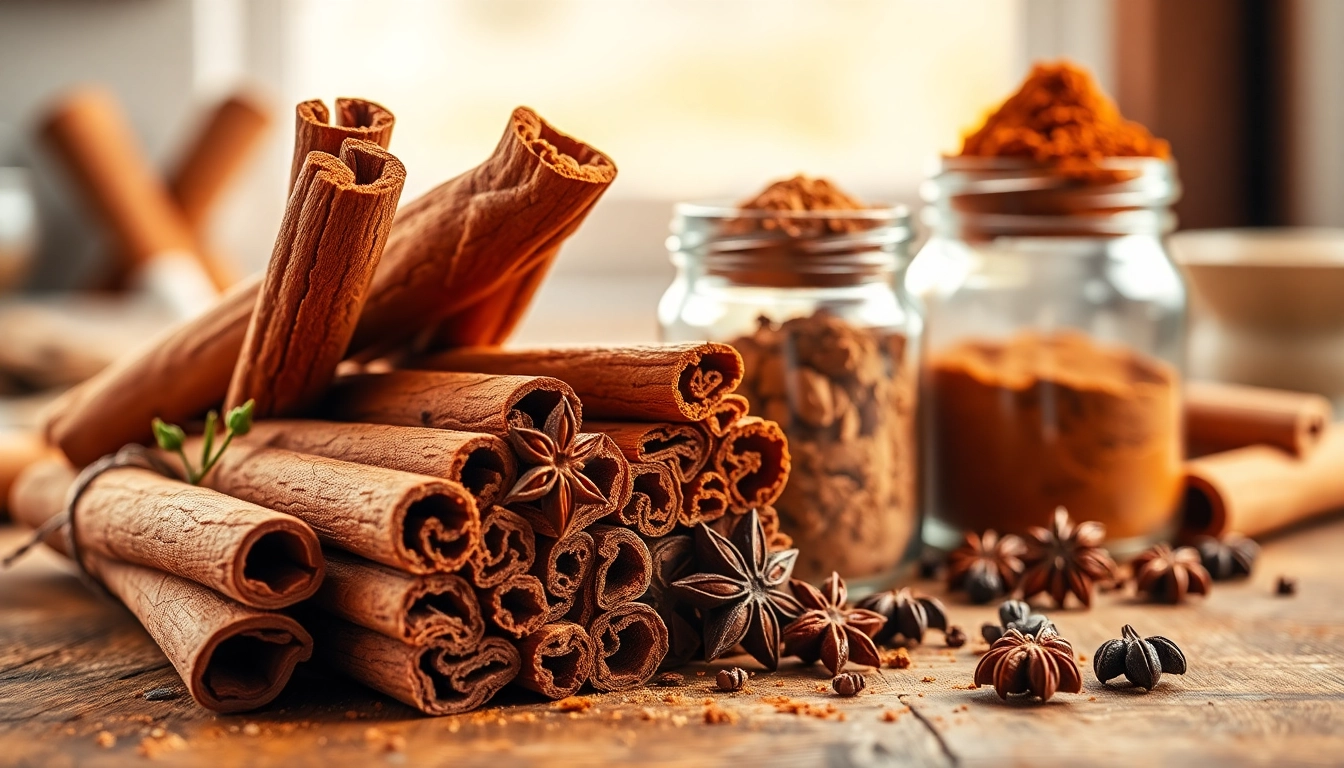1. Introduction to Cinnamon Bark
Cinnamon bark is more than just a common kitchen spice; it represents an integral part of cultures and cuisines around the world. As it graces our desserts and savory dishes alike, its warm, sweet aroma fills kitchens and evokes comfort. Cinnamon Bark has a layered history that intertwines with health benefits, culinary delights, and traditional practices. Ready to explore the magical world of this spice? Let’s dive deeper.
1.1 What is Cinnamon Bark?
Cinnamon bark is derived from the inner bark of trees belonging to the Cinnamomum family, a group of evergreen trees native to tropical regions. The most commonly used species are Cinnamomum verum, also known as Ceylon cinnamon or “true cinnamon,” and Cinnamomum cassia, often referred to simply as Cassia cinnamon. The bark can be processed into powder or used in stick form and has been cherished since ancient times for its unique flavor and aromatic properties.
1.2 Types of Cinnamon Bark: Ceylon vs. Cassia
The two primary types of cinnamon bark – Ceylon and Cassia – exhibit distinct differences that influence their culinary and medicinal applications. Ceylon cinnamon, recognized for its subtle sweetness and complex flavor profile, is often favored in gourmet cooking and baking. Its antioxidant properties are significantly higher than those found in Cassia. On the other hand, Cassia cinnamon, commonly used in North America and the rest of the world, has a stronger, spicier flavor and is more readily available, making it a staple in many households.
1.3 Historical Significance of Cinnamon Bark
Cinnamon has a rich historical background, valued since ancient Egypt for its fragrance and used for mummification. Ancient Romans valued it highly as well, believing it to be fit for kings. Beyond culinary usage, it has been revered in traditional medicine systems, including Ayurveda and Traditional Chinese Medicine (TCM), where it is cited for various health benefits.
2. Health Benefits of Cinnamon Bark
Recent studies have reiterated the numerous health benefits of cinnamon bark, elevating its status from mere spice to a potential health booster. Let’s delve into the nutrition and medicinal properties.
2.1 Nutritional Value of Cinnamon Bark
The nutritional content of cinnamon bark is impressive. It is a rich source of manganese, iron, and calcium, along with dietary fiber. A teaspoon of ground cinnamon contains a hefty amount of antioxidants, which play essential roles in neutralizing harmful free radicals in the body.
2.2 Medicinal Uses of Cinnamon Bark
Cinnamon bark has been used traditionally to address various ailments. Studies show that it can effectively support digestive health, potentially alleviating gastrointestinal discomfort like bloating and gas. Its anti-inflammatory properties may help reduce pain experienced from arthritis and similar conditions. Moreover, some research suggests that it may have positive effects on blood sugar regulation, making it a valuable supplement for individuals managing diabetes.
2.3 Potential Health Risks of Cinnamon Bark
While cinnamon bark has numerous benefits, it should be consumed in moderation. Cassia cinnamon contains coumarin, a substance that may pose risks when ingested in large amounts, including damage to the liver and increased bleeding risk in sensitive individuals. Pregnant women should consult with healthcare providers before including large quantities of cinnamon in their diets.
3. Culinary Uses of Cinnamon Bark
Beyond its health benefits, cinnamon bark serves as a versatile ingredient in the culinary world. Understanding how to incorporate it effectively can enrich meals and enhance flavors.
3.1 How to Use Cinnamon Bark in Cooking
Cinnamon bark can be utilized in both stick and ground form. When using sticks, it is often simmered in liquids, infusing dishes with a warm, aromatic flavor. Ground cinnamon is widely used for baking and spicing up sweet and savory dishes. It’s also excellent in spice blends, adding depth to curry powders and marinades.
3.2 Popular Dishes Featuring Cinnamon Bark
Cinnamon can be found in a variety of dishes worldwide. From the comforting aroma of cinnamon rolls and spiced teas to savory dishes like Moroccan tagines, the possibilities are endless. Popular recipes often include cinnamon in oatmeal, apple pies, and curries, reinforcing its adaptability in diverse cuisines.
3.3 Tips for Selecting Quality Cinnamon Bark
When choosing cinnamon bark, quality matters. Always opt for Ceylon cinnamon when health benefits are paramount, as it contains lower levels of coumarin. Look for tightly rolled sticks with a shiny, reddish-brown color and a strong aromatic scent. Avoid opened packages with a dull appearance, as they may indicate older or less potent cinnamon.
4. Cinnamon Bark in Traditional Medicine
Cinnamon bark’s use in traditional medicine demonstrates its long-standing significance across different cultures. Its applications are wide-ranging and deeply rooted in herbal practices.
4.1 Ethnobotanical Uses of Cinnamon Bark
Ethnobotanically, various cultures utilize cinnamon bark for ailments such as colds, flu, and digestive issues. Many communities have also employed it in ceremonial practices, believing it carries protective properties and brings good fortune.
4.2 Cinnamon Bark in Ayurveda and Traditional Chinese Medicine
In Ayurveda, cinnamon is considered a warming spice that aids digestion, enhances circulation, and balances bodily energies. Similarly, TCM regards it as a warming herb, used to dispel cold and treat conditions ranging from gynecological issues to respiratory ailments, emphasizing its multifunctional applications throughout history.
4.3 Modern Research on Cinnamon Bark Benefits
Contemporary studies continue to explore cinnamon bark’s potential, uncovering mechanisms that may reduce cholesterol levels and regulate insulin sensitivity. Researchers are now investigating its use as a supplementary treatment for various metabolic disorders, reinforcing its valued place in both kitchens and medicine cabinets.
5. Conclusion and Future of Cinnamon Bark
The versatility and benefits of cinnamon bark extend far beyond their traditional applications. As we move forward, the potential for innovation in utilizing this spice is vast.
5.1 Sustainability of Cinnamon Bark Production
With the growing demand for herbal products and spices, concerns regarding the sustainability of cinnamon production are paramount. Ensuring ethical sourcing through responsible harvesting and supporting local farming practices is critical for preserving cinnamon forests and the livelihoods of local communities.
5.2 Future Trends in Cinnamon Bark Uses
Looking ahead, we are likely to see an increase in cinnamon bark’s application not only in culinary fields but also in health and wellness products. Its incorporation into supplements, functional foods, and cosmetics highlights its expanding influence in the holistic health market, which values natural ingredients.
5.3 Final Thoughts on Incorporating Cinnamon Bark into Daily Life
Incorporating cinnamon bark into daily life offers a delicious way to enhance dietary habits while reaping health benefits. With its rich history, diverse applications, and vast potential, cinnamon bark stands as a testament to the power of nature in our culinary and medicinal practices. Whether enjoyed in cooking or celebrated in traditional medicine, cinnamon bark is a spice worth embracing.










Leave a Reply